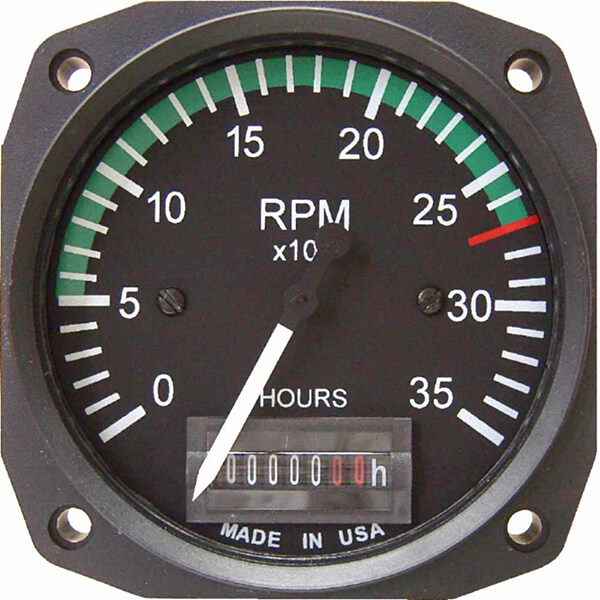Enhance Your Driving Experience with a Dependable Tachometer
Enhance Your Driving Experience with a Dependable Tachometer
Blog Article
The Relevance of a Tachometer in Monitoring Engine Rate and Performance in Automotive Applications
In the world of automotive design, the tachometer stands as a pivotal tool in the driver's toolbox, providing a straight home window into the internal operations of an automobile's engine. Beyond its feature as a plain scale of revolutions per minute (RPM), the tachometer works as a vital tool for lovers and professionals alike, supplying real-time understandings right into engine performance and health and wellness. Understanding the importance of this tool goes beyond surface-level observations, diving right into the intricate connection in between engine rate, power output, and general driving experience. As we discover the diverse function of the tachometer in auto applications, a deeper gratitude for its influence on vehicle dynamics and effectiveness starts to arise.
Importance of Keeping Track Of Engine RPM
Keeping track of engine RPM, or transformations per minute, is a vital element of vehicle maintenance and performance assessment. Engine RPM directly correlates with the speed at which the engine's crankshaft rotates, indicating just how promptly the engine is running - tachometer. By checking RPM, technicians can assess the wellness of the engine, identify possible problems, and fine-tune performance. An irregular RPM reading may signal troubles such as engine misfires, damaged ignition system, or problems with the fuel delivery system. Consistently high RPM analyses might indicate hostile driving behaviors or the requirement for a higher equipment change to improve gas effectiveness.
In addition, checking engine RPM is important for performance assessment in racing and high-performance vehicles. In summary, checking engine RPM is not just vital for discovering issues but also for maximizing engine performance in different automotive applications.

Benefits of Real-Time Data
In automobile applications, real-time information plays a vital function in offering immediate insights right into the efficiency and problem of the car. By constantly keeping track of different specifications such as engine rate, temperature level, fuel usage, and extra, real-time information supplies numerous benefits that contribute to enhanced performance and security when traveling.
Additionally, real-time information helps with efficiency optimization by providing prompt feedback on driving routines and engine effectiveness. Chauffeurs can change their behavior in real-time based on this details to achieve better fuel economic climate and prolong the life expectancy of their lorry.

Furthermore, real-time data plays a crucial function in modern automotive diagnostics, making it possible for service technicians to swiftly detect and resolve breakdowns. This causes reduced downtime, reduced maintenance prices, and eventually, improved total vehicle dependability and long life (tachometer). By taking advantage of the power of real-time information, automotive stakeholders can make educated choices that positively influence both the performance and durability of the automobile
Influence On Gear Shifts
Effective equipment shifts in auto applications considerably affect visit the website total efficiency and driving experience. The tachometer plays an essential function in enhancing equipment changes by offering real-time engine speed data to the vehicle driver. When coming close to the redline on the tachometer, it signals the driver to upshift to stop over-revving the engine and triggering possible damages. On the other hand, downshifting at the right moment can help maintain the engine in its power band, guaranteeing responsive acceleration when needed.
Furthermore, the tachometer aids in achieving smoother gear transitions, specifically in hand-operated transmissions. By checking engine rate, motorists can carry out gear shifts at the optimum RPM array, reducing snagging movements and lessening wear on the transmission elements. This accuracy on duty changes not just boosts driving comfort however also contributes to sustain effectiveness.
Enhancing Fuel Efficiency
Given the vital role the tachometer plays in optimizing gear shifts for efficiency and engine health, it straight adds to taking full advantage of gas effectiveness in automobile applications. By providing real-time responses on engine speed, the tachometer aids motorists in preserving one of the most effective RPM variety for gas economic climate. When drivers continually keep an eye on the tachometer and adjust their motoring habits appropriately, they can prevent unneeded fuel intake caused by over-revving or hauling the engine.
Moreover, the tachometer aids drivers identify the most fuel-efficient gear to be in at any kind of given minute, preventing the engine from functioning tougher than required. This is particularly critical during velocity and travelling, where being in the best equipment can significantly affect gas efficiency. Furthermore, the tachometer can alert chauffeurs to possible mechanical concerns that could be negatively impacting gas economy, such as a slipping clutch or a stopped up air filter. Finally, the tachometer acts as a useful device in boosting gas effectiveness by advertising Our site optimal driving practices and determining locations for renovation in the lorry's performance.

Maximizing Engine Longevity
The tachometer's function in keeping track of engine rate and performance is crucial in making sure the longevity of automotive engines. Monitoring the tachometer enables drivers to remain within the recommended RPM variety for their lorry, stopping unneeded strain on the engine and extending its life-span.

Verdict
In final thought, the tachometer plays an essential function in keeping track of engine rate and performance in auto applications. By offering real-time information on RPM, it enables effective equipment shifts, boosted fuel performance, and taken full advantage of engine long life. This tool is crucial for preserving ideal engine efficiency and guaranteeing the total functionality of an automobile.
Report this page